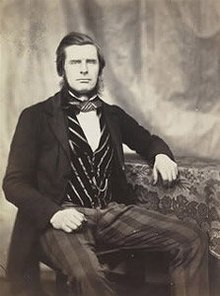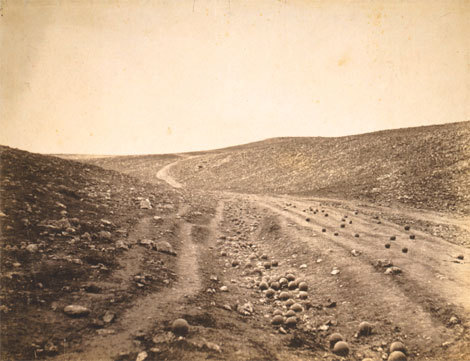Which is more important, the artist or the photograph?
In Errol Morris’ article “Which came first, the Chicken or the Egg?”, I found Morris’ journey of research in determining the order in which Fenton’s photographs at Crimea were taken particularly interesting. In the first part, Morris researches different scholars’ opinions of the photographs and through this he comes to the conclusion that they base their arguments on Fenton’s psychological character. For all these scholars, it is important to know the artist’s intention in order to better understand the work. The problem with this is that we can never actually know what Fenton was thinking while taking the photographs (even with the information found in the the letters he wrote) and so everything from this point has to be speculation. In effect, the scholars make different assumptions about Fenton’s character and were more interested in that, than the evidence provided in the work itself. In parts two and three, Morris leaves the scholars and instead becomes obsessed with the photographs themselves and the evidence they can provide. His process then becomes based on scientific analysis rather than psychological analysis. From this, it becomes clear that Morris believes that the photographs themselves bear not just more information but more accurate information, then the artist.

The artist: Roger Fenton
I find this extremely interesting because it closely relates to a method of art history known as semiotics. This method contains a theory known as the “Death of the Author” in which the author of a work no longer gives the work meaning and instead the signs within the work provide its meaning. From a semiotic perspective, it is not important to know or examine an artist’s motivation behind a work because he is not what gives the work meaning. Alternatively, we should examine the signs or symbols found within a work and try to understand what meanings those signs had during the time in which they were made. For example, take Titian’s painting Venus of Urbino and notice the dog laying down behind the woman. When this painting was created, dogs were seen as symbols of fidelity and Titian used this sign so that his viewers would understand a message: the woman in the painting is virtuous and faithful. It is important to note that Titian has not given the dog this meaning and instead the society he was living in has constructed this meaning according to convention.
As a result, Morris’ shift from researching scholarly opinions of Fenton’s intentions and character to examining the element of the photographs themselves proves the fact that meaning is embedded in the art itself, not its creator.

The dog is a cultural symbol for fidelity
